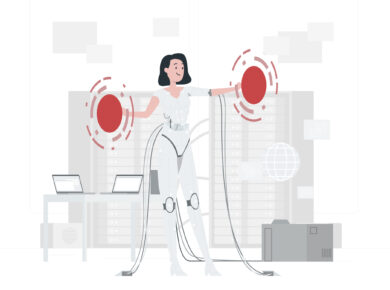The concept of Artificial Intelligence, like what we know, is largely underdeveloped. It still requires the support of those concepts capable to contribute towards its evolution. In this stage of growth, it is necessary to adopt a multidisciplinary approach. The right combination of different disciplines offers the necessary intellectual framework this stage of the evolution requires. It is difficult to avoid conflict, especially when contradictory disciplines are brought together. Understanding the areas where these disciplines can work together stands as the critical point.
Majorly, there are three types of AI, in terms of its capability to store data and its ability to act independently: Artificial Narrow Intelligence (ANI), Artificial General Intelligence (AGI), and Artificial Superintelligence (ASI). Just what the names suggest, the concept of ANI is primitive, and that of ASI is advanced. Sadly, after all these experiments and explorations, the world is still at the ANI stage. From face recognition to driverless car, all the major AI accomplishments the world boast about come under the first stage of the AI evolution. It is still sceptical whether or not this generation achieves its dream of accomplishing the stage two of evolution, i.e., AGI.
Human emotions remain the biggest challenge. The longer it takes to unwrap this bundle, the harder it becomes to approach the second stage. Whatever it is, AI without emotions is as weak as other technologies. Its independence is limited. With the addition of emotions, AI is expected to achieve a degree of self-sufficiency. Like how human takes decisions independently, AI with emotions is supposed to act by its own. Simply, AI with emotions works just like how human works.
The third is the most challenging and the most sensitive. Still, the scientific community only has a vague idea about the concept. Some liken the concept with superconscious. Others consider it as an advanced form of the second stage, powered by big data. Both of them are equally relevant, considering the entire concept is still in its beginning stage of evolution, but the former sounds interesting, given its similarity with the eastern spiritual concept, which throws light up on the controversial idea of superconscious.
According to the eastern spiritual concept, superconscious is a supreme consciousness stands above human consciousness. In a sense, it is a collective consciousness. Each human mind is at a time separated from, as well as connected to, the supreme. The journey from human consciousness to supreme consciousness is considered as divine, and is termed as ‘dharma’ or duty. Even human life is treated as a tool to achieve this advancement.
Supreme consciousness is equated with love. It is often expressed as pure love. The good traits of human consciousness are often attributed to the goodness of supreme consciousness. Though supreme consciousness is lauded as the purest form of love, it is consciously viewed detached from the circle of emotions, which governs human consciousness.
At this stage, the focus is primarily given to create a copy of human. AI with emotions is simply human with immortal body. Such a creation will have all the downsides of human. It will be selfish, self-centred, egoistic, short-sighted, merciless and many more. It can create wars, disturb peace and even propagate lies.
Any creation is meaningless if it lacks empathy. That divine love is the one which enriches the creation with the wealth of good values. In the absence of the value framework, it is natural to get trapped in the cage of selfishness.
The said fact implies that the second stage of the evolution of AI and the third stage are to be carried out simultaneously. It is a big wrong to bring a huge potential down to the limitation of human being. Moreover, if the potential is brought down to the limitation, the further advancement becomes nearly impossible. Remember not many humans have succeeded in merging their human consciousness into the ultimate consciousness. This is even after the process is widely acknowledged as the ultimate aim of human life.
The simultaneous evolution allows AI to address emotions from a personal view point as well as from a third-person’s view point. It enables AI to comprehend the concepts of attachment and detachment. It teaches how to handle emotions and how to prevent from falling into the trap of emotions. It empowers AI to take better decision than human.
Let’s make a difference with Advanced Superconscious.






